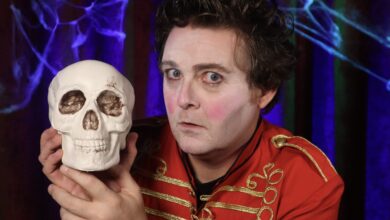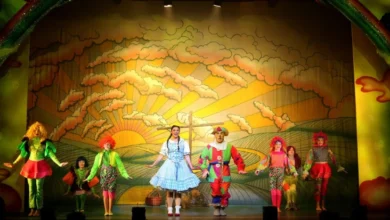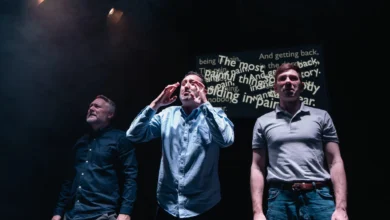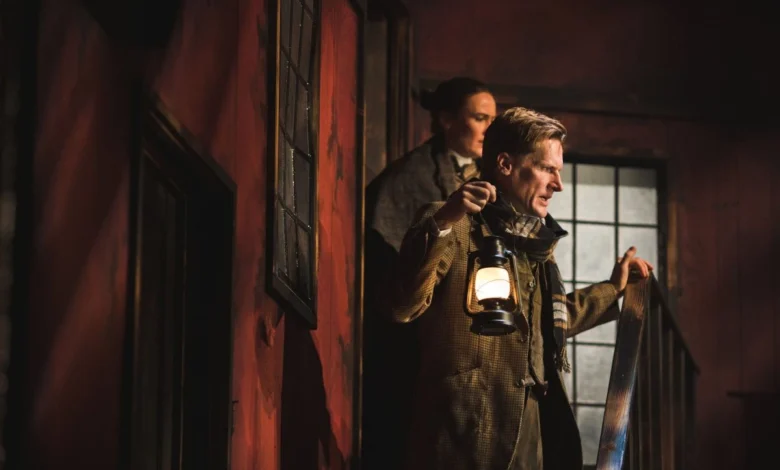
Nick Lane Brings a New Sherlock Holmes Mystery to Life at Shakespeare North Playhouse
From Page to Stage: Stitching Together the Holmesian World…
Running from the 5th to the 8th this November, the ever-inventive Blackeyed Theatre brings its latest touring production, Sherlock Holmes: The Hunt for Moriarty, to Prescot’s Shakespeare North Playhouse — promising mystery, intrigue, and a thrilling night at the theatre.
Adapted by Nick Lane from the works of Sir Arthur Conan Doyle, this brand-new play takes audiences back to London, 1901. The Empire trembles as Queen Victoria’s health fails and secrets leak from the corridors of power. When cryptic clues point toward a grand conspiracy, Holmes and Watson find themselves drawn into a tangled web of espionage and betrayal — one that could shake the very foundations of British society. As the title suggests, the great detective’s nemesis, Professor Moriarty, lurks ever closer in the shadows.
According to Blackeyed Theatre, Lane’s script draws inspiration from several classic Holmes stories, including The Bruce-Partington Plans, The Second Stain and The Final Problem, weaving them into a single, fast-paced narrative that combines political intrigue with the familiar intellectual sparring between Holmes and Watson.
The UK tour has already earned praise from critics for its ambition and atmosphere. The production’s mix of projection, live sound, and an adaptable set has been singled out for creating a rich, immersive world — no small feat for a touring show. But that complexity is part of its appeal — a true Holmesian puzzle where audiences are invited to piece together clues alongside the detective himself.
For Prescot audiences, Sherlock Holmes: The Hunt for Moriarty delivers the intellectual thrill of classic detective fiction wrapped in the inventive, high-energy staging that has become Blackeyed Theatre’s hallmark. Expect atmosphere, ingenuity, and a generous dose of suspense, as Steve Kinrade spoke with adapter Nick Lane about the creative challenges of bringing such an ambitious mystery to life — offering a fascinating glimpse into the craft and philosophy that drive Blackeyed Theatre’s distinctive approach…
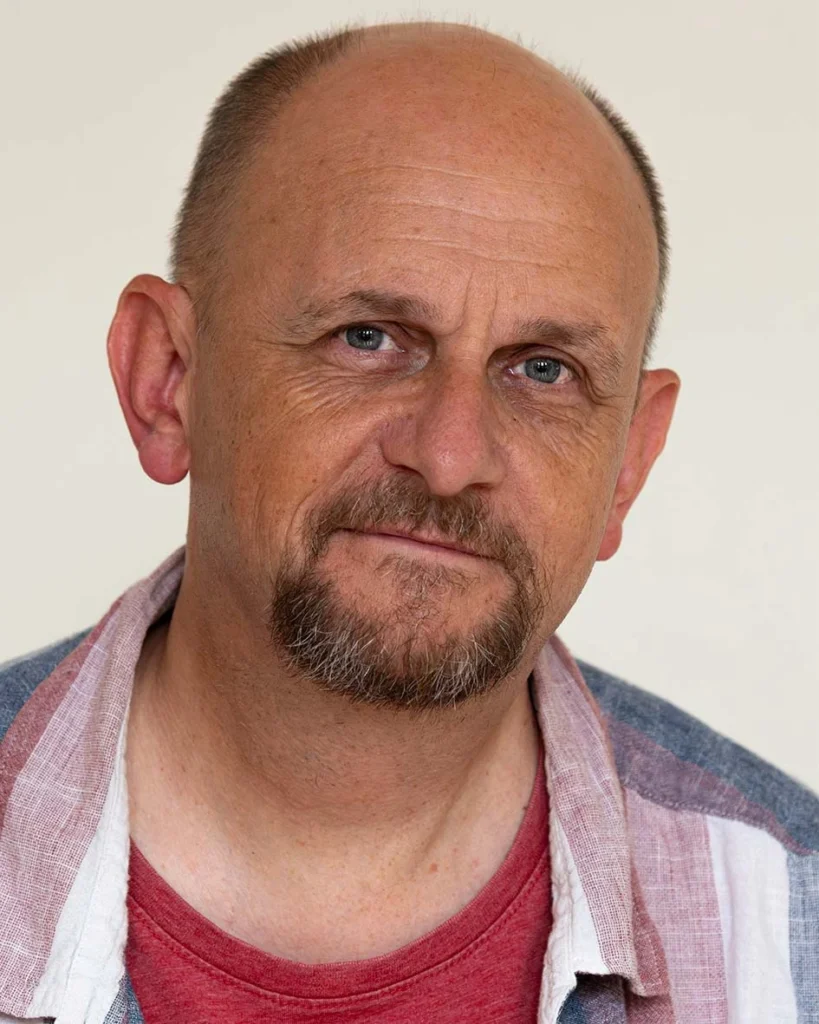
The promotional material mentions that Nick Lane “has cleverly got around” the fact many of Conan Doyle’s stories are short by combining several of them (and referencing others). Can you talk through the process of selecting which stories or “adventures” to include (versus omit or only reference)? What were your criteria?
What I was looking for when I came to bring the overarching narrative together were a series of stories with a similar feel, as well as existing within the same kind of criminal framework. Conan-Doyle was a master at writing complicated, engaging, thrilling mysteries while at the same time finding a way to comment on the world around him – over the course of the sixty canonical adventures he was able, through Holmes and Watson’s cases, to explore slavery, prejudice, criminal institutions such as the Mafia and the Ku Klux Klan, religious organisations like the Mormons, he explored politics, he took his readers around the world… and I wanted to be able to reflect that in this adaptation.
So finding stories with similarly high stakes to one another and bring them under Moriarty’s sinister control was always the plan. The three key mysteries that form the spine of our narrative – if you like, our act structure – are terrific in their own right, but pulled together they do ratchet up the tension and raise the stakes pretty well. I was determined to do that too.
The notion of placing Moriarty as a clandestine mastermind behind multiple cases is a bold reinterpretation. How did you negotiate the tension between innovation and Holmes purism — i.e., anticipating objections from diehard fans — while still wanting to surprise?
I’m not so sure it’s as bold a reinterpretation as you might think – admittedly Moriarty only physically appears in one story, but he is referenced in a number of others – most significantly (for me, at least), one of those stories was Doyle’s final full-length Holmes novel, The Valley of Fear. In that story, Holmes described to Watson, and to the little seen Scotland Yard Detective, Inspector McDonald, that Moriarty is the spider at the centre of a web of interconnected criminal activity, so the framework was there, even if the canvas is slightly different. I guess the Holmes purists could feel frustrated that I have placed Moriarty at the heart of an altogether more dangerous game – global politics and the potential fragmentation of Empire as opposed to the London underworld – but based on Doyle’s description of the Professor (Holmes himself calls Moriarty “The Napoleon of crime”), our villain certainly does have the intellectual capacity for something so grand.
You make a very good point about surprise, too – and this is where I do hope the Holmesians will grant me latitude – because while playing some of the stories “as written” is satisfying in one way, those people who know the stories well are not going to be surprised by how the mysteries are solved… but by creating something that exists around those stories, that pulls them together and creates an entirely new way to frame the climax, those same Holmesians get to enjoy the play on a couple of levels. Yes, they can compare the adaptations of the adventures to the cases themselves, but they can also experience something new, that hopefully allows them to see the great detective afresh (and sits them on a level playing field with those audience members who aren’t so well-versed with the stories).
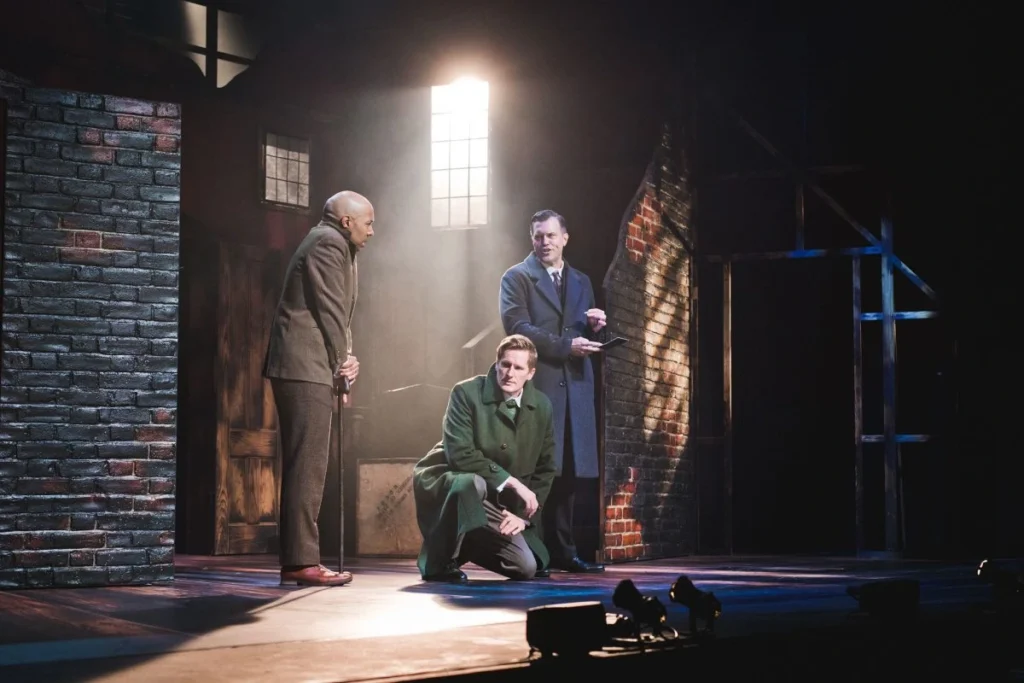
Did the structure of the adaptation (interweaving multiple stories) pose particular challenges for pacing, clarity, or character arcs? Were there particular stories or episodes you wanted to include but ultimately left out? What made you decide against them – length, coherence, thematic fit, production constraints?
I mean, it’s interesting… I think a lot of it boils down to what we want from the Sherlock Holmes experience (whether that’s in the original book form, on stage or on screen). And everyone’s different, I appreciate that – but one of the key things I’ve always enjoyed about Holmes and Watson’s cases is how intricate and seemingly unsolvable they are.
This is Holmes’ point, as he says to Watson at the start of Doyle’s second novel, The Sign of Four, when Scotland Yard are at their wits’ end with a crime, the matter is laid before the great Consulting Detective and he finds a solution. So for me, the journey has never been about whether or not we can solve the mysteries (because if we could, Holmes stops being remarkable), but how Holmes does it.
The mysteries have got to make sense of course – and to return to part of your question, one of the big challenges was to make sure the whole thing holds water – but I wasn’t worried about complexity, necessarily. As for interweaving the stories, I have to say that’s the fun part! I loved bringing the whole thing together.
I did make alterations to one or two of the female characters (Mrs. Hudson is a far more integral part of the Baker Street triumvirate now for example), but given that Doyle’s readership and a twenty-first century audience are unlikely to be identical I’d hope he’d forgive me.
Pace is always a challenge in bringing crime fiction to the stage – you’re predominantly dealing with reported action, and clue-gathering can become a little similar, and perhaps a touch arid, so you’re trying to find ways to keep those scenes light and pacey.
And as for whether or not there were other stories I’d have liked to include in the narrative… yes, the first treatment for the whole story – this is pre-draft one, before we’d got anything nailed down – did indeed include two other adventures. Ultimately the potential length of the piece prevented this version from becoming a reality. The play is pretty long as it is, but you’d have been looking at something close to four hours in length!
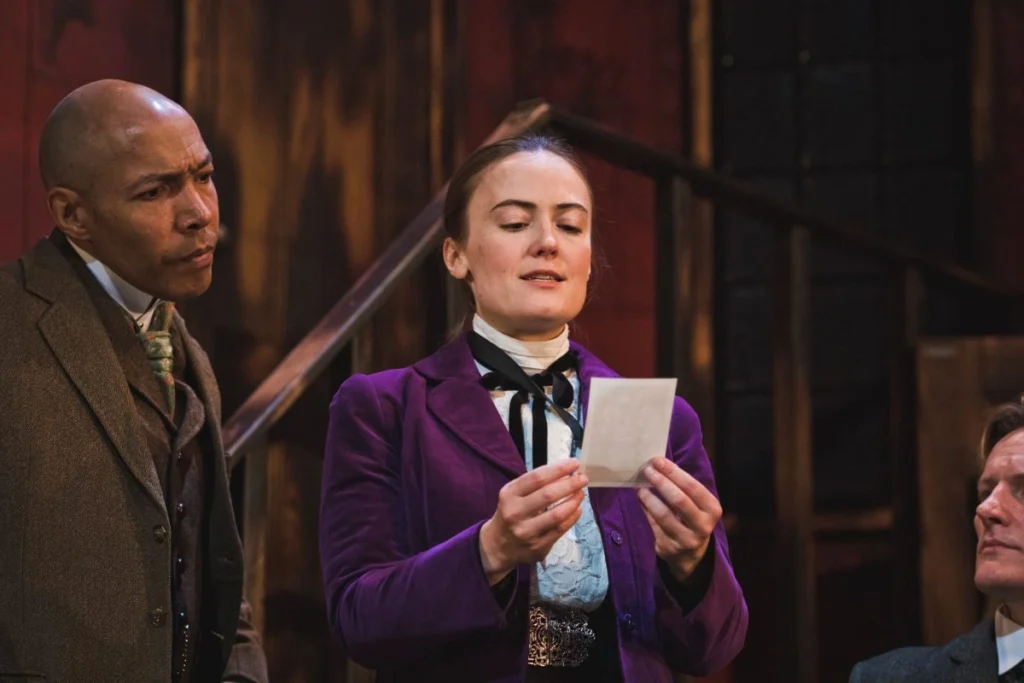
Victoria Spearing’s set has to be extremely versatile to handle the many distinct locations. How early in the design process did you fix on the basic “dark, dingy, post-fire-Baker Street” as your primary base, and how did you work with that to allow seamless transformations?
The design journey was fun. Before I knew which of Doyle’s stories we were going to be using, all I had in my head was a kind of ‘Porte-manteau’ project, the different stories taking place on a train. The idea at that point was that each story would take us from one station to another as Holmes and Watson headed across Europe in pursuit of Moriarty, with the multi-role-playing actors as different passengers, boarding or leaving the train at the start of each separate tale and “becoming” the peripheral, or secondary, characters as the separate stories required.
This was discussed and rejected as a concept by Adrian as being too disconnected (and I had to agree). Then came the mammoth version mentioned above, which I thought – for reasons you may understand once you’ve seen the play – could be set in a theatre. This way, conceptually, the multi-role figures are all actors, and the whole thing has an extra layer of theatricality. Once again, this idea (as well as the bum-numbing length) was rejected, and I went back to refining and honing the story I’d started to create to bring the tales together.
It was then that I realised the solution had been staring me in the face all along – one of the adventures I was adapting mentions that 221B Baker Street is burned, and I thought, starting in a burned building and seeing the events that led up to it was exciting… and it was at that point that Victoria was brought on board. I’m lucky enough to have worked with Victoria a good few times now – I love her work and trust her implicitly. I told her of the locations I was thinking about within the story, and she came up with the set design we have now.
The projections seem central to the visual storytelling. Did you conceive of them from the start as integral, or did they emerge during tech/design workshops? How do you decide which elements should physically exist on stage and which to delegate to projection/digital?
The projections were Artistic Director Adrian McDougall’s idea – credit where it’s due! I hadn’t conceived of them initially but Adrian thought they would help with the visual storytelling aspect of the narrative which is, as I’ve mentioned previously, quite complex. And it’s fascinating – initially I thought all we’d be able to have was the same kind of image you might see from an overhead projector, so I kept the ideas and concepts quite small.
Once I saw what Mark was able to do with it however, I wish I’d have done more! Alas at the Shakespeare North in Prescot we won’t be using the projection – with the time we have to set up the show there just didn’t seem to be a natural place for us to fire the images so that all the audience can see them. As I say though, I always thought the show should be able to work with or without them.
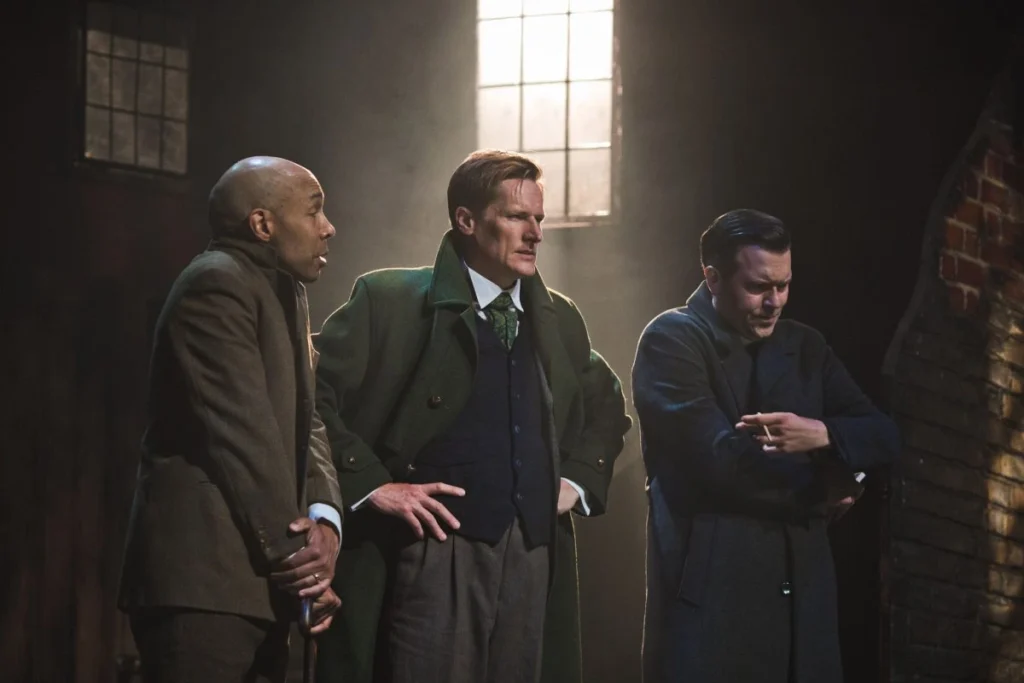
How did you use light and shadow to evoke the mood, period, and shifts in tone? Were there particular “moments” you considered lighting pivotal?
Each of the questions above (and the one below) are probably better served by the relevant designers, but I’ll give this one a go – I’ve heard lighting, and good lighting design, described as painting with light, and to that end Olly Welsh, lighting designer for the past three or four Blackeyed shows, is a fantastic painter!
We tend to have a conversation about the mood and tone of each of the scenes and/or locations, and his eye does the rest. I guess nothing was more pivotal than the conclusion of Holmes and Moriarty’s arc – naturally it happens towards the end of the play and there are several elements Olly brought together to guide the audience’s collective eye to where we want them to look. I really don’t want to reveal any more than that – it’d give too much away!
The production is described as having a “haunting soundscape.” At what points in the process did you integrate sound design or original music (by Tristan Parkes) with script and staging? How collaborative was that integration?
As with Olly and Victoria, Tris is someone I’ve worked with extensively (our working relationship goes back over thirty years), and without wanting to repeat myself unnecessarily, it really is just about discussing the mood and tone of a scene or a character arc and allowing Tris’ imagination to explore that. Tris’ process is regularly to record the read-through and then use the timings on certain sections of the script to craft music – naturally, if things change, lines get cut and so on I’ll let him know – so we can hear how the music grows alongside our process.
Because the plot is quite complicated, with many characters (and actors multi-rolling), what rehearsal strategies did you use to help actors—and later audiences—keep clarity of identity, motivation, and transitions? Did you use dramaturgical tools (timelines, maps, character “cheat sheets”) in rehearsal?
As well as the physical crafting of the show my rehearsal process will always be an open discussion between equals. In this case some of those discussions were about timelines, ‘who knows what when’ and so on, and I was constantly kept on my toes about who each of the characters are… but I’m going to say a lot of the skills used to create good and strong character differentiation were brought into the room by the actors themselves.
Mark and Ben obviously only play Holmes and Watson (and play them brilliantly), but as for the other four, we kept honing, adjusting and playing with the other characters to ensure they worked well within their scenes and contributed to the piece as a whole. I’d say play is the key word here – each of the actors was allowed the space to find the different roles, whether that was as a result of in-depth conversations about what their part in the mystery is, an exploration into where they were from socio-politically or simply how they might walk. In Gav, Pippa, Robbie and Eliot I’m genuinely blessed to have their talents to play with!
The reviews of the production have been extremely positive. You are, I estimate, a quarter of the way through a tour of considerable length. How much does such positive feedback affect the company’s morale?
This isn’t one I can answer specifically, as I’m not out on the road with the company so I don’t know if they’re looking at the reviews. I’m told from our Company Stage Manager that the nightly feedback heard by Front of House staff is regularly very positive, and that’s important – I suspect the mood of the staff in the theatres that host the tour will affect company spirit as much as anything else. That said, it can’t hurt, can it? Knowing people are enjoying the show. As I was once told by an actor I worked with back in the nineties, “Even a dog likes a pat on the head.” Not that I’m calling the company a pack of dogs, I hasten to add!
So whether you’re a lifelong devotee of Baker Street or simply looking for a great night out, Sherlock Holmes: The Hunt for Moriarty promises a smart, stylish, and satisfyingly twisty mystery — a production brimming with wit, atmosphere, and intrigue. As the great detective himself might say, missing it would be far from elementary…
Sherlock Holmes: The Hunt for Moriarty
5-8 November 2025
Shakespeare North Playhouse
For tickets and details, visit shakespearenorthplayhouse.co.uk




